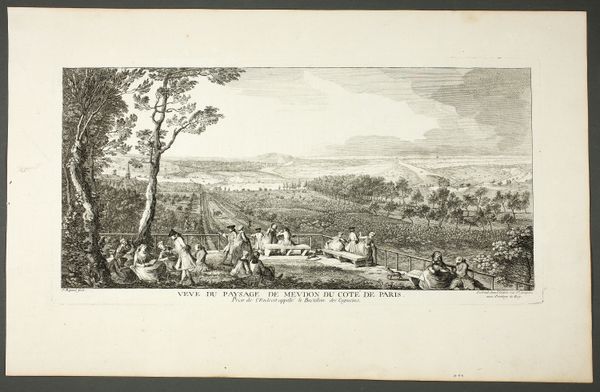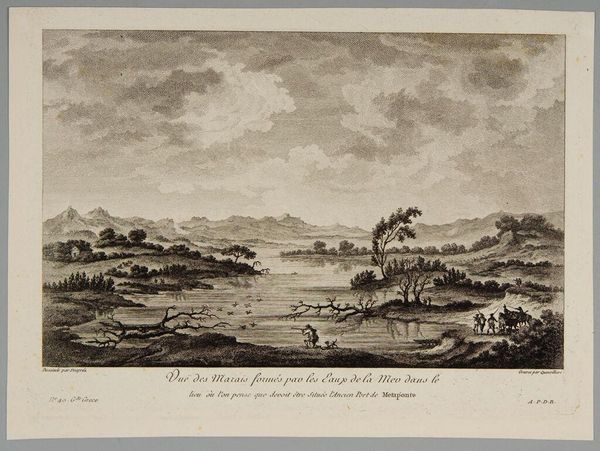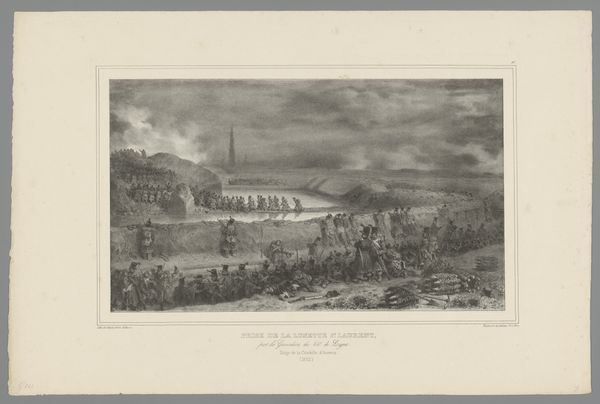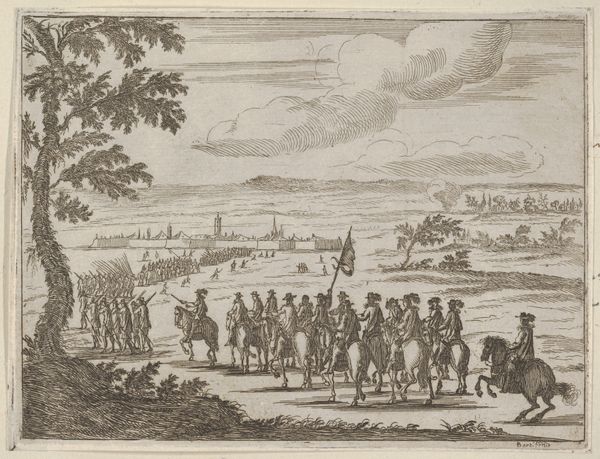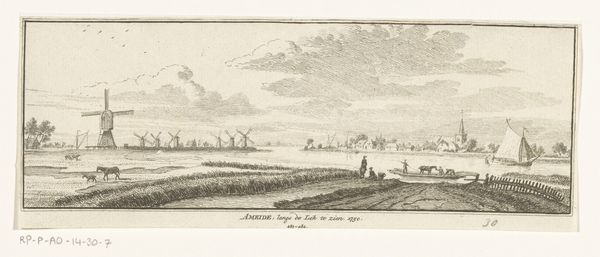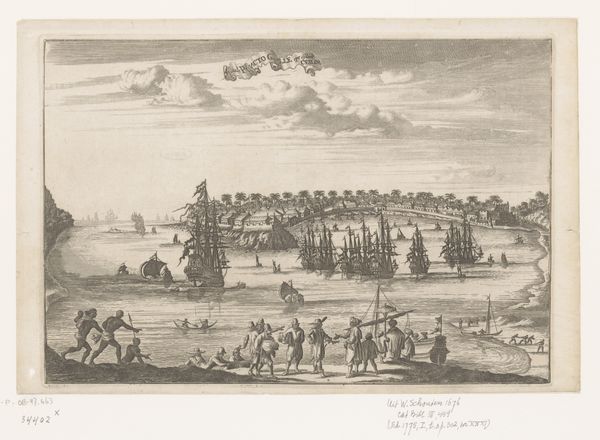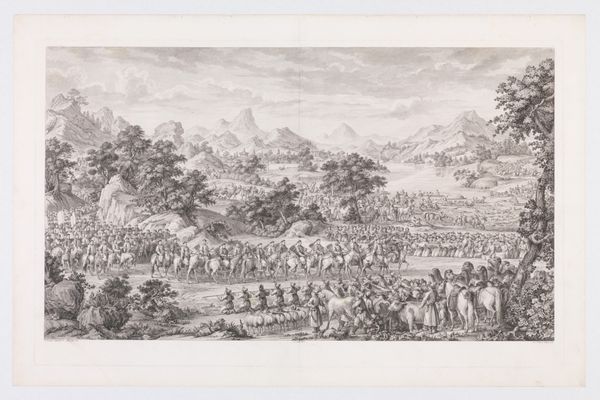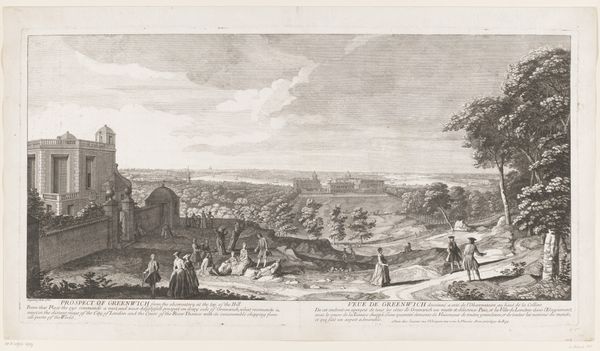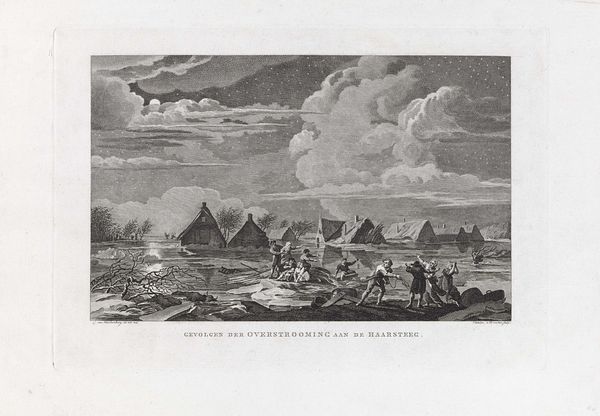
Oversteek van de rivier Isser in Algerije door Aimable Pélissier en commandant Durieu en hun troepen 1857
0:00
0:00
print, engraving
#
narrative-art
# print
#
old engraving style
#
landscape
#
history-painting
#
academic-art
#
engraving
Dimensions: height 130 mm, width 181 mm
Copyright: Rijks Museum: Open Domain
Editor: We're looking at an 1857 engraving, "Oversteek van de rivier Isser in Algerije door Aimable Pélissier en commandant Durieu en hun troepen". It depicts troops crossing a river. The detail is incredible, especially considering it's a print. What catches your eye in terms of the composition? Curator: The rhythmic repetition of the soldiers in the water immediately commands attention. Observe how the artist has employed linear perspective, not so much to create depth illusionistically, but rather to establish a cadence, a visual echo of the troops’ relentless advance. Editor: I see what you mean! The lines of soldiers seem to converge into the horizon, it is repetitive but it emphasizes the distance being traveled. Curator: Precisely. Now consider the monochromatic palette. The absence of color directs our gaze towards the interplay of light and shadow, creating a dramatic tension across the image’s surface. Does the stark contrast enhance the work or detract? Editor: It creates a sense of foreboding, doesn't it? Almost ominous with the soldiers traversing the water and the mountain silhouettes far away. Curator: The structure of the engraving invites contemplation on several formal elements simultaneously: line, tone, texture and pattern are critical to create visual movement, which conveys much of the tension. What have you noticed yourself? Editor: The clarity and repetition makes the work imposing. Thinking about those elements really adds to my appreciation. Thanks! Curator: Indeed. Formal analysis refines perception through disciplined looking. I've learnt from this discussion myself, I’ve gained a better awareness of that intersection between narrative and abstraction that sometimes is lost in history prints such as this one.
Comments
No comments
Be the first to comment and join the conversation on the ultimate creative platform.


